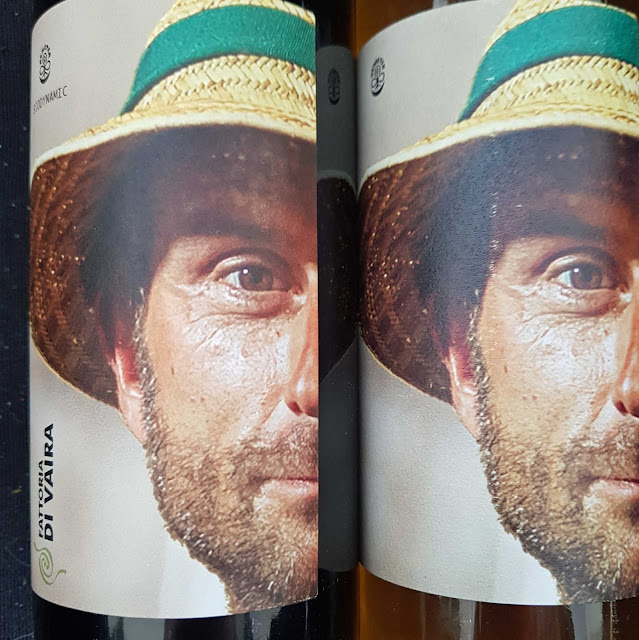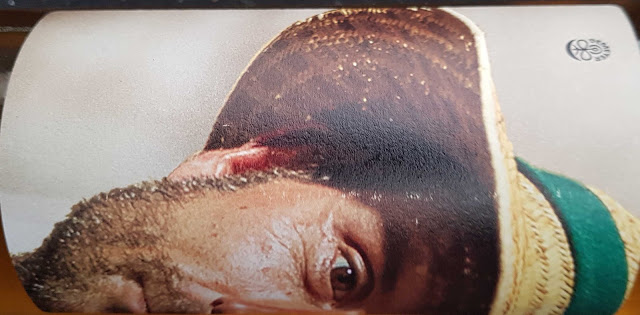Bubbles for your Valentine.
Some sparkling suggestions!
The two best known sparkling wines are Champagne and Prosecco and they are, of course, included below. But so too are less well-known options such as Cava, Crémant, and Pet Nat.
Pet Nat-Bubbles without the hefty price tag
Pet Nat? Well, Pet Nat is an abbreviation for pétillant naturel, the French term that roughly means naturally sparkling.
Is it then a copy of champagne? Not so. It is the other way around if anything, as Pét-Nat has been around longer. Pét-Nat is bottled while still undergoing its first round of fermentation. The French call this process “methode ancestral” and you may see that on some labels.
You may see “bottle fermented,” or the Italian “col fondo,” (more or less a pét-nat Prosecco). The crown cap and a little bit of harmless sediment are other clues!
The method, with variations, is pretty widespread across the wine world. Most are fun and good with food, especially lighter dishes. Simple, authentic and quite diverse, Pét-Nat puts the bubbles on your dinner table or even picnic spread. It sparkles without the hefty price tag.
Entre Vinyes Oníric Pét-Nat 2020, 11.5%
Catalonia’s Parc Natural Del Foix is the source of this pétillant from Mary Pawle wines..
Oníric in Catalan translates as dreamer and Entre Vinyes is a personal project of Maria Barrena (Azul y Garanza in Navarra), the aim being to rescue old forgotten vineyards and restore a balanced ecosystem. This 60-year vineyard, surrounded by a rich biodiversity, is in the Baix Penedes region (in Catalonia) close to the Med. The grapes for the pét-nat are Xarel-lo (mostly) and Muscat.
Colour is a cloudy yellow/lemon. On pouring, you create a large white “head” but it won’t hang about. This is easy drinking, approachable and refreshing, with good depth and length. And of course, it has that pleasant sparkly tingle. White fruit flavours and just enough acidity to balance make it harmonious all the way to the lip-smacking finish. A wine for sun and fun. Highly Recommended.
Champagne and Champagne Charlie
Charles Heidsieck Blanc de Blancs NV Champagne (AOC)
Pale gold is the colour of this Blanc de Blancs by Charles Heidsieck, imported by Liberty Wines. Unceasing fountains of pin-head bubbles race towards the top of the glass. Amazing concentration straight away, yet is is elegant on the palate, lovely balance and weight, engaging with a lively acidity also with mineral notes and a creamy mouthfeel. It is one hundred per cent Chardonnay and has notes of lemon, apple and pear plus orchard blossom and the typical Champagne toastiness. Very Highly Recommended.
Charles Heidsieck, one of the most admired Champagne houses, was founded in 1851, by the man who would become known as ‘Champagne Charlie’. Their size, and commitment to excellence, has been underpinned by a winemaking team that between them have been named 'Sparkling Winemaker of the Year' at the International Wine Challenge on over a dozen occasions.
Champagne Fleury B d N Brut Champagne NV, 12%, Mary Pawle Wines
This Blanc de Noirs is made from 100% Pinot Noir and is indeed a white wine from dark-skinned grapes. The Fleury family have been here in Champagne since 1895. They raise their vines, biodynamically since 1989, on the Côtes des Bar in the southern extreme of Champagne. Indeed, they are pioneers of organic in the area.
Back to the wine itself and bubbles proliferate here, racing to the top in non stop streams. It has a deep yellow colour, intense flavours and aromas, including the typical ‘biscuity” notes. The wine has terrific depth from initial sip to the lingering finalé. Dry and delicious. Unusually intense, impeccably crafted, this is Very Highly Recommended and well worth seeking out!
Beaumont des Crayères Vintage 2013 Fleur Blanche Blanc de Blancs Brut at O’Briens Wine.
Intense, biscuity is the strong first impression as the liquid meets the palate. Intense and exciting from the engaging first sip, with fountains of micro-bubbles powering upwards, with biscuity aromas and flavours and floral notes too, this is one of the better ones for sure. It is made from 100% Chardonnay and obviously 2013 was a very good year. Very Highly Recommended
O’Briens, the importers, are also enthusiastic: This is one of the most exciting, elegant Champagnes that we have ever tasted. Made from Chardonnay grapes, the pinhead bubbles have an acrobatic exuberance in the glass. A perfect apéritif wine but the richness on the palate would also lend it well to food.”
English Sparkling and the other French bubbles
English sparkling wines are quite popular these days and some of the best are being made by Limerickman Dermot Sugrue (above). You will find them under Sugrue South Downs and Wiston Estate in the Le Caveau portfolio here.
While online there, why not check out their range of Pet Nats.
Crémant is the term used to classify French sparkling wines produced, using the Méthode Traditionelle, outside the boundaries of the Champagne region. The method, also known (within Champagne) as méthode champenoise, involves disgorgement and a second fermentation in the bottle and you can read more here.
Exquisite Collection Cremant du Jura (AOP) Chardonnay, Aldi
Left it late? Pop into Aldi and get this excellent Brut (dry).
I was very impressed with it. A sparkling Chardonnay, made using close to the same methods they use in making champagne, was perfect for my unexpected little celebration. It is not lacking in complexity, has light fruit flavours, a hint of biscuit (that you find in champagnes), and a fine finish. Good price too..
There are quite a few Crémants in France and many are excellent. Other Crémants come from Alsace, Burgundy, Limoux, Loire, Savoie, Bordeaux, Die (Rhone), and Limoux.
Saint Hilaire Blanquette de Limoux (AOP) brut (Languedoc-Roussillon, France), 12.5%
Did you now that champagne is not the oldest sparkling wine produced in France? That honour is claimed by Blanquette de Limoux which is also produced by the Methode Traditionnelle where it is naturally fermented in the bottle. It was first created by the Benedictine monks of the Abbey of Saint Hilaire over 450 years ago. Written records survive from 1531. The abbey is 25 miles south of Carcassonne.
*****
CAVA
There’s some terrific Cava, the Spanish sparkling wine, out there also, so why not give the Iberian bubbles a try. Cava is a distinctive under-rated sparkling wine, made using the same method as Champagne.
Entre Vinyes Funàmbul Brut Nature Reserva 2017, 11.5%,
€23.50 approx. Manning’s, Ballylickey; Mary Pawle
Fresh and dry, this elegant Cava is one for your shortlist; elegant yes, but full of energy and flavour (apricot and apple) and with amazing balance, all with a mineral note lingering on to the end. The mousse is creamy and smooth. This is pleasure to drink and Very Highly Recommended. Three grape varieties, Xarel·lo, Macabeu and Parellada varieties, are in the blend. The wine has been aged for 24 months..
With an average age of 60 years, these vineyards are in the natural environment of Foix, surrounded by oak and pine forest, under a dry climate and on a porous soil (which swallows the water) and limestone, very poor and shallow, with hardly any organic matter. The great biodiversity present creates a unique ecosystem that naturally regulates the balance of the vineyard. Here, working in an artisanal way, they produce some terrific wines including this Cava.
If you haven’t tried Cava before why not head over to your local Supervalu and get a bottle of their Gran Troya. With its citrus flavours and a delightful finish, the pale gold Gran Troya is a terrific celebratory drink at an affordable price. Great for just sharing with himself or herself. If you haven’t tried Cava before, this is a good introduction. The grapes used are the traditional Macabeo, Xarel-lo and Parellada. Try with olives, grilled almonds. Serve at 6-8 degrees.
Prosecco (and Franciacorta)
Prosecco in Colour!
Bubbles are usually associated with the all kinds of celebration and the the fun is enhanced when the bottles come in colour as they do if they are by Bottega. Recently, I was lucky to have a couple of delicious bottles of Prosecco on hand, each by Bottega. The Gold Prosecco Brut impressed for sure but it was the Bottega Rose Gold that really caught my attention. It is a terrific Spumante Brut rose, made from Pinot Noir grapes grown throughout the Veneto.
The hand painted bottles are not only eye-catching but "reflect the quality and care put into producing this wine”. Bottega do not use chemical-based products for their "metallised" bottles; this means the solvent for the varnish is water-based, instead of being oil or alcohol-based like more traditional varnishes.
Aldi Exquisite Collection Valdobbiadene Prosecco Superiore (DOCG) NV,
From the heart of the Prosecco area, from the steep hillsides of Valdobbiadene in the Veneto, comes this DOCG Prosecco. It is exquisitely light and refreshing with pleasing bubbles, attractive autumn fruit flavours and floral touches. Have to say quite an amazing Prosecco for an amazing price.
I had popped into the local Aldi in search of a Crémant de Jura but that was out of stock. I happened to spot this, including the DOCG, and took a gamble.
There is another Italian sparkling wine, Franciacorta, and it is well worth searching out. Again, the Le Caveau site can help you, here
The 1701 Franciacorta Brut DOCG is a blend of Chardonnay (85%) and Pinot Noir (15%). The summer heat of the vineyard is tempered by the breeze from the lake (Iseo, about 30 minutes west of Lake Garda) and the mountains to the north. “We choose to keep it on the lees for 30 months, well above the appellation minimum. It is made in the traditional manner, manually harvested, with the indigenous yeasts, and a secondary fermentation in the bottle but with zero dosage.
It is a gorgeous sparkling wine, the palate full and generous, clean, fresh and elegant, apple notes, citrus too and that typical brioche note, beautifully balanced and a dry finish.























